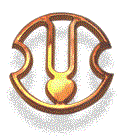![[Home Page]](../grfx/bml_logo.gif)

Vaisnava Saints Page
Sri Gaura Ganodesa Dipika
Version I | Version II
Sweetest Description of Janmastami-lila
"When Kavi-karnapura was only seven years old, he was initiated by Sri Caitanya Mahaprabhu into the Hare Krsna maha-mantra. He later became the greatest poet among the Vaisnava acaryas."
Caitanya-caritamrta, Antya lila, Chapter 16
"Srila Sivananda Sena has been described by Srila Bhaktisiddhanta Sarasvati Maharaja as follows: He was a resident of Kumarahatta, which is also known as Halisahara, and was a great devotee of the Lord. About one and a half miles from Kumarahatta is another village, known as Kancadapada, in which there are Gaura-Gopala Deities installed by Sivananda Sena, who also established a temple of Krsnaraya that is still existing. Sivananda Sena was the father of Paramananda Sena, who was also known as Puri dasa or Kavi-karnapura. Paramananda Sena wrote in his Gaura-ganoddesa-dipika (176) that two of the gopis of Vrndavana, whose former names were Vira and Duti, combined to become his father. Srila Sivananda Sena guided all the devotees of Lord Caitanya who went from Bengal to Jagannatha Puri, and he personally bore all the expenses for their journey. This is described in the Caitanya-caritamrta, Madhya-lila, Chapter Sixteen, verses 19 through 27. Srila Sivananda Sena had three sons, named Caitanya dasa, Ramadasa and Paramananda. This last son later became Kavi-karnapura, and he is the author of Gaura-ganoddesa-dipika. His spiritual master was Srinatha Pandita, who was Sivananda Sena's priest.
...Caitanya dasa, the eldest son of Sivananda Sena, wrote a commentary on Krsna-karnamrta that was later translated by Srila Bhaktivinoda Thakura in his paper Sajjana-tosani. According to expert opinion, Caitanya dasa was the author of the book Caitanya-carita (also known as Caitanya-caritamrta), which was written in Sanskrit. The author was not Kavi-karnapura, as generally supposed. This is the opinion of Srila Bhaktisiddhanta Sarasvati Thakura. Sri Ramadasa was the second son of Sivananda Sena. It is stated in the Gaura-ganoddesa-dipika (145) that the two famous parrots named Daksa and Vicaksana in krsna-lila became the elder brothers of Kavi-karnapura, namely, Caitanya dasa and Ramadasa. Karnapura, the third son, who was also known as Paramananda dasa or Puri dasa, was initiated by Srinatha Pandita, who was a disciple of Sri Advaita Prabhu. Karnapura wrote many books that are important in Vaisnava literature, such as Ananda-vrndavana-campu, Alankara-kaustubha, Gaura-ganoddesa-dipika and the great epic Caitanya-candrodaya-nataka. He was born in the year 1448 sakabda (A.D. 1527). He continually wrote books for ten years, from 1488 until 1498."
Caitanya-caritamrta, Adi lila, 10:60-62
"Srinatha Pandita, one of the disciples of Advaita Prabhu, was the spiritual master of the third son of Sivananda Sena, who was known as Paramananda Kavi-karnapura. It is said that during the time of Kavi-karnapura the Krsna Raya Deity was installed. According to hearsay, Virabhadra Prabhu, the son of Nityananda Prabhu, brought a big stone from Mursidabad from which three Deities were carved--namely, the Radhavallabha vigraha of Vallabhapura, the Syamasundara vigraha of Khadadaha and the Sri Krsna Raya vigraha of Kancadapada. The home of Sivananda Sena was situated on the bank of the Ganges near an almost ruined temple. It is said that the same Nimai Mullik of Calcutta saw this broken-down temple of Krsna Raya while he was going to Benares and thereafter constructed the present temple."
Caitanya-caritamrta, Adi lila, 10:107